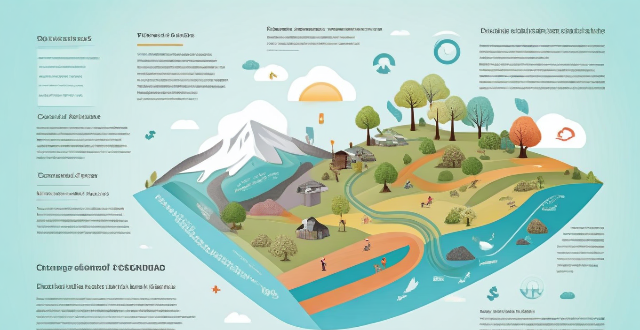Climate change impacts education through extreme weather events, health issues, food insecurity, economic challenges, social changes, and environmental degradation. These effects necessitate collaboration between educators and policymakers to develop resilient strategies for adapting to climate change.

How Does Climate Change Affect Education?
Climate change is a global issue that affects every aspect of life, including education. The impacts of climate change on education are multifaceted and can be felt at all levels, from early childhood education to higher education institutions. In this article, we will explore the various ways in which climate change affects education.
Direct Impacts of Climate Change on Education
Extreme Weather Events
One of the most direct impacts of climate change on education is the increased frequency and severity of extreme weather events such as hurricanes, floods, wildfires, and droughts. These events can cause significant disruptions to the educational process, leading to school closures, damage to school infrastructure, and displacement of students and teachers.
Health Impacts
Climate change also has direct health impacts that affect education. For example, increased temperatures and air pollution can lead to respiratory problems and other health issues for students and teachers, reducing their ability to focus on learning and teaching.
Food Insecurity
Climate change can also exacerbate food insecurity, which has a direct impact on education. Students who do not have enough to eat may struggle to concentrate in class or may miss school altogether due to hunger.
Indirect Impacts of Climate Change on Education
Economic Impacts
Climate change can also have indirect impacts on education through its effects on the economy. For example, extreme weather events can damage critical infrastructure such as roads and bridges, making it difficult for students to get to school. Additionally, climate change can lead to job losses in industries such as agriculture and fishing, which can reduce household income and make it more difficult for families to afford education expenses.
Social Impacts
Climate change can also have social impacts that affect education. For example, climate change-induced migration can lead to overcrowded schools in urban areas, while rural areas may experience a decline in student enrollment as families move away. This can create challenges for educators who must adapt to changing student populations and needs.
Environmental Impacts
Finally, climate change can have environmental impacts that affect education. For example, rising sea levels and coastal erosion can threaten the physical location of schools, while deforestation and habitat loss can limit opportunities for outdoor learning and experiential education.
Conclusion
In conclusion, climate change has both direct and indirect impacts on education that must be addressed if we are to ensure equitable access to quality education for all students. To mitigate these impacts, it is essential that educators work closely with policymakers, community leaders, and other stakeholders to develop strategies that promote resilience and adaptation in the face of climate change.